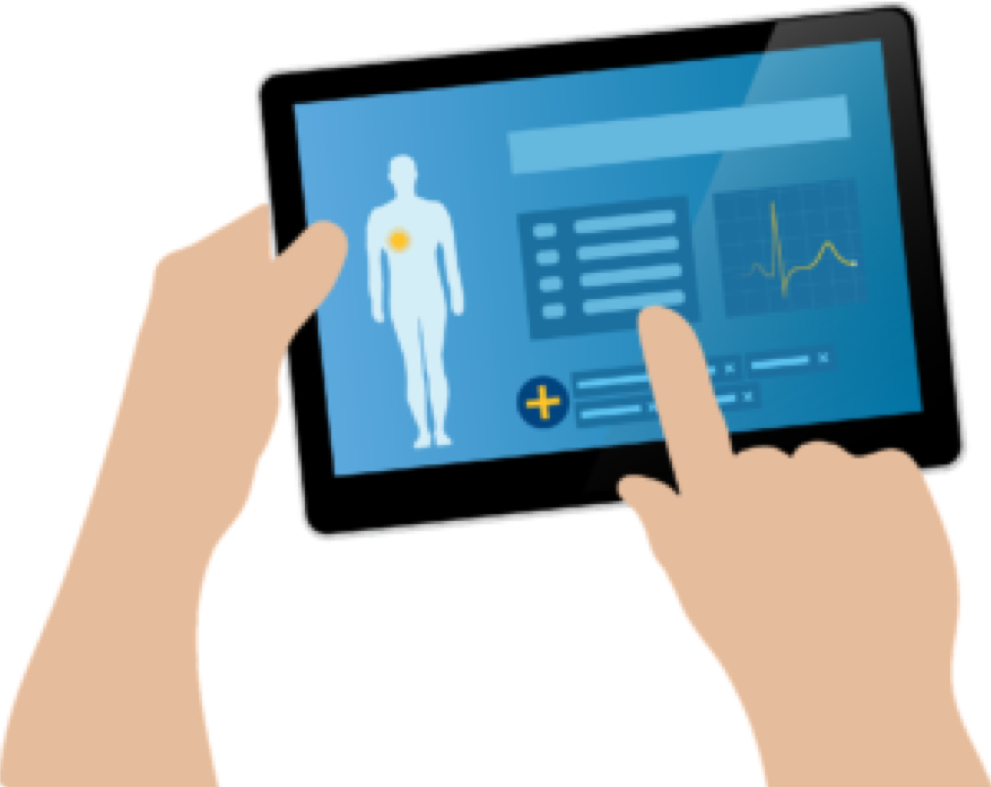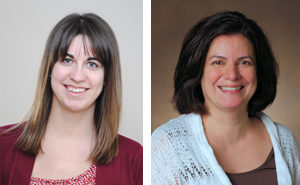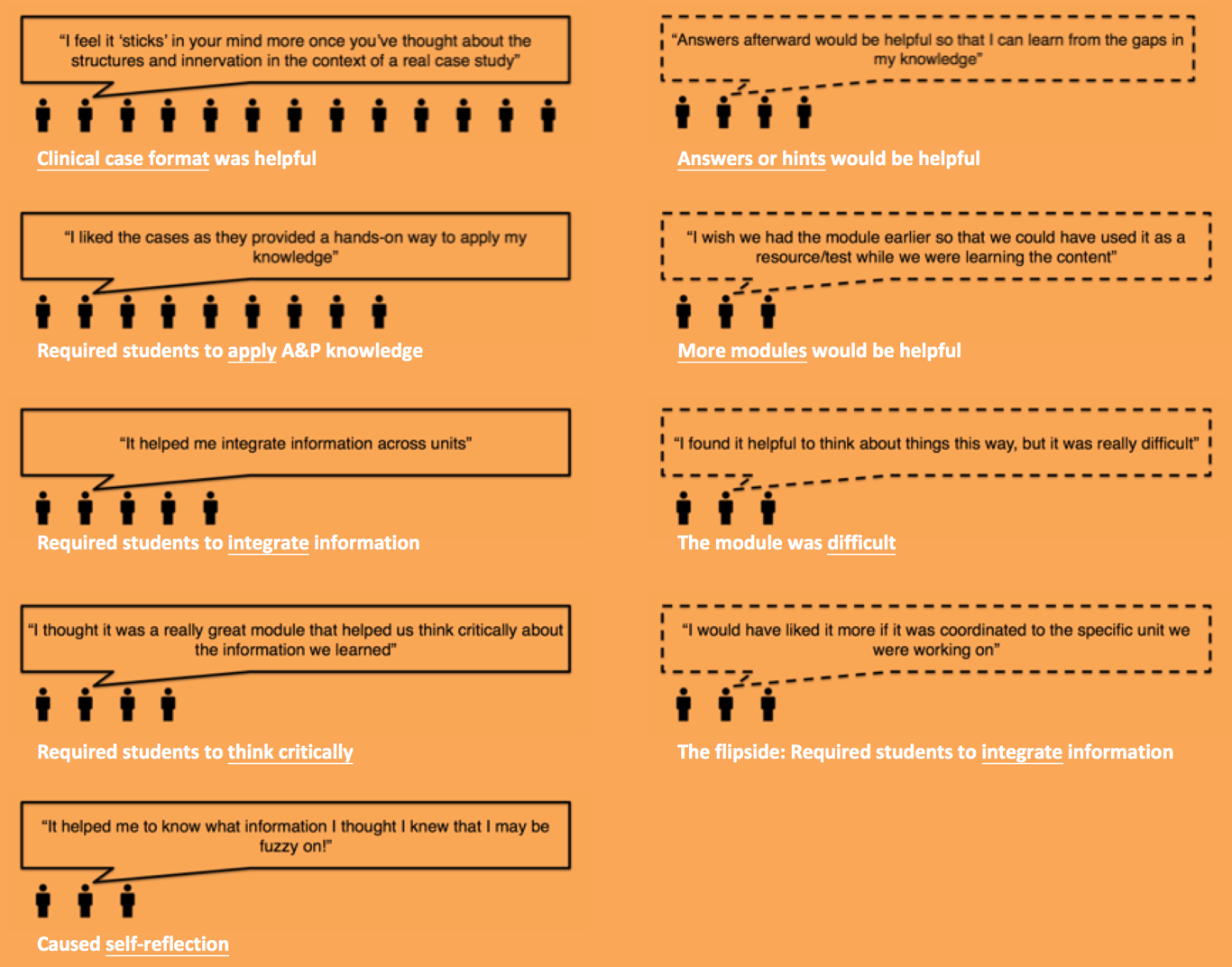SLP 5236: Physiological Bases of Communication II
Natalie Covington working with
Rima Abou-Khalil, Assistant Clinical Professor
Department of Hearing and Speech Sciences
Overview
To be effective clinicians, speech-language pathology (SLP) Master’s students must learn and retain information about the anatomy and physiology of the subsystems that support normal speech, language, hearing, and cognition. It is critical that students have a firm grasp of anatomy and physiology and be able to flexibly apply this knowledge to the observable signs and symptoms they encounter in their patients. At Vanderbilt, anatomy and physiology is taught as a two-semester course, and students must use knowledge acquired in this course for the remainder of their clinical program: all future courses and clinical practica require understanding of typical anatomy and physiology. Therefore, it is critical that students acquire a firm foundation in anatomy and physiology and be able to apply this learning to real clinical cases by the conclusion of the course. Students would benefit from increased opportunities to independently practice using their knowledge of anatomy and physiology in the context of clinical cases. Thus, the goal of this online module was to provide students with opportunities to practice a key skill: linking basic anatomy and physiology knowledge to real clinical cases.
Module Development
An online module was developed in which students were presented with information about a particular patient’s signs and symptoms, drawn from real clinical cases reported in published studies. This clinical case presentation was presented in the form of a written synopsis similar to an electronic medical record. Students were asked to link clinical signs and symptoms from the case (e.g. breathy voice quality, hypernasality, hemiparesis) to the anatomic and physiologic subsystems that they have learned throughout their anatomy and physiology course. The online module provided students with additional opportunities to practice applying skills learned in class to a greater number of clinical cases than could be accomplished in face-to-face class time alone. Students were able to proceed through the cases at their own pace, allowing them to develop and refine their use of anatomic/phyisiologic information in the context of real clinical cases.
Research Questions
- Does completing a case-based online module improve student engagement in a foundational anatomy & physiology course?
- Clinical cases provide a link between foundational anatomy & physiology and students’ long-term goals
- Does completing a case-based online module improve students’ confidence in their anatomy & physiology knowledge?
- Clinical cases provide opportunities for extended practice outside of class
- What are students’ opinions about the case-based online module?
Assessment of Module’s Effectiveness
Students completed two pre- and post-module measures. The first assessed student engagement. The second asked students to assess their current level of understanding of a set of key concepts important for successful completion of the module. Finally, at the conclusion of the module, students were asked for their feedback on aspects of the module that were helpful to their learning and aspects that could be improved upon in future iterations of the module.
Results
There were no statistically significant differences in student engagement or understanding scales post-module. However, 17 out of 21 students indicated that the module was helpful. Several themes emerged from students’ free-response feedback. First, a majority of students (62%) expressed that the clinical-case format of the module was interesting and helpful. A number of students reported that the module required application of their previously acquired foundational knowledge (43%), that the module required synthesis of information from across course units (24%), and that the module required critical thinking (19%). Finally, some students reported that the module required self-reflection and evaluation of their own learning (14%). Students also proposed a number of changes to the online module. A number of students suggested that immediate feedback or “hints” would improve the module (19%). Some students reported that they wished online modules had been assigned more frequently throughout the course (14%), that the module was too challenging (14%), and that they wished the module was linked to a particular unit (rather than integrating content across course units) (14%).
Discussion
Masters students in speech-language pathology indicated that completion of a case-based online anatomy & physiology was helpful to their learning and facilitated deeper engagement with course material. There were no statistically significant differences in scale scores (student engagement or degree of understanding); this is unsurprising given the small sample size (n = 21) and the brief nature of the intervention (a single module towards the end of the course). However, student comments about the module suggest that it was a useful format for increasing practice of course material outside of class and suggest that refining the module format for future cohorts would be beneficial. Student comments suggest that the case-based format of the module prompted learning at higher levels of Bloom’s taxonomy (e.g. “apply” and “analyze” levels) compared to typical anatomy & physiology assignments. In addition, the module prompted self-reflection for some students, as they discovered that applying information to clinical cases required a deeper level of anatomy & physiology understanding than they had currently attained. Future iterations of the module could be improved in a number of ways. First, more frequent implementations of case-based modules across the course (rather than a single module) would increase out-of-class practice and may be more likely to produce change in measures of student knowledge and engagement. In addition, student comments suggest that they would be open to more frequent modules. Second, incorporation of immediate feedback for some aspects of the module might be helpful for maintaining motivation in students who found the format particularly challenging. Finally, future implementations of the module should consider using a different platform. The current module was hosted in Google forms, which was easily accessible for students and easy to set up as an instructor. However, this format did not allow students to leave the module and return to it easily. For at least one student, previous work was lost after stepping away from the module. In sum, an online clinical case-based module demonstrated promise for increasing students’ engagement with foundational anatomy and physiology knowledge that will be critical to their success throughout their graduate program and as future speech-language pathologists in clinical practice.


